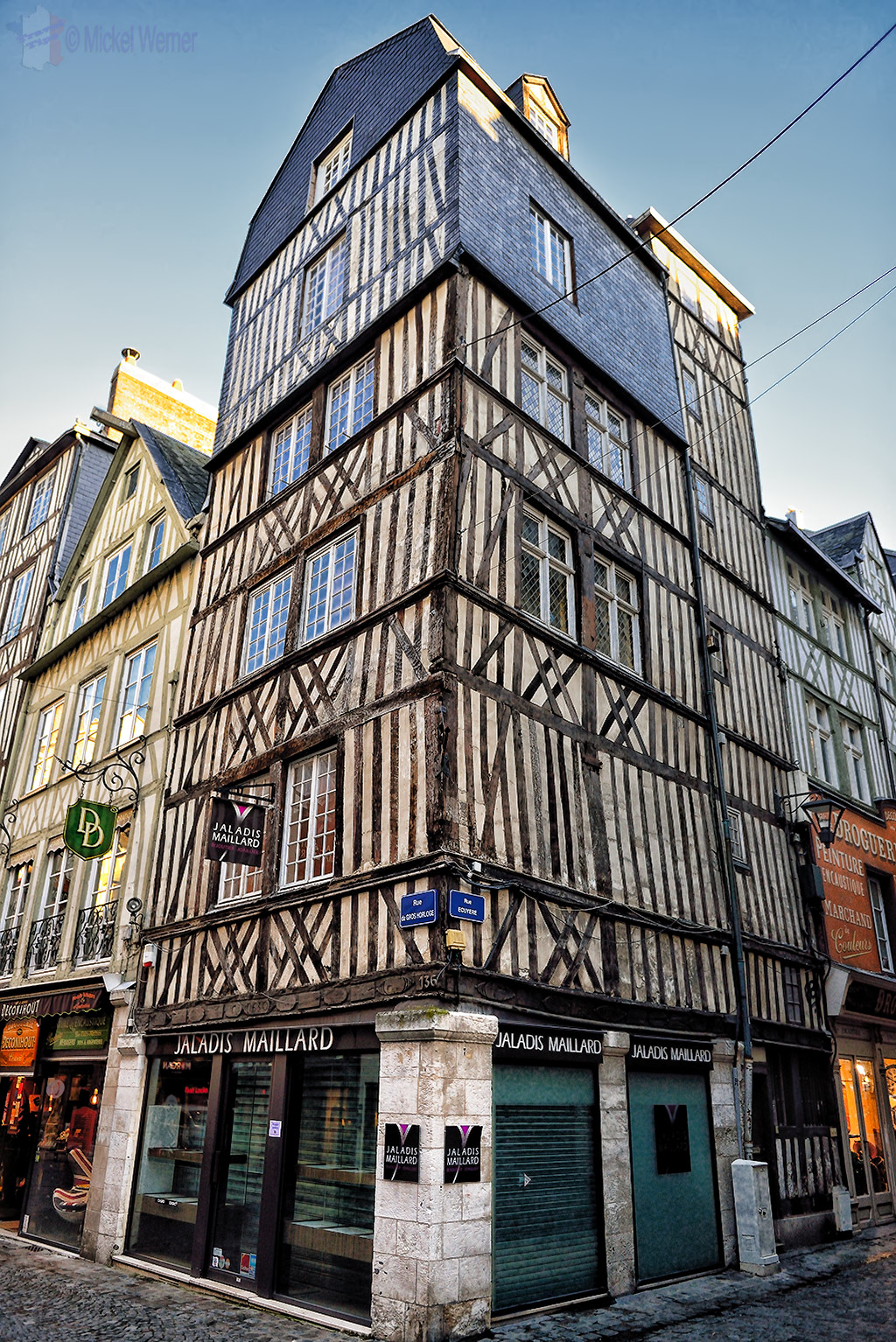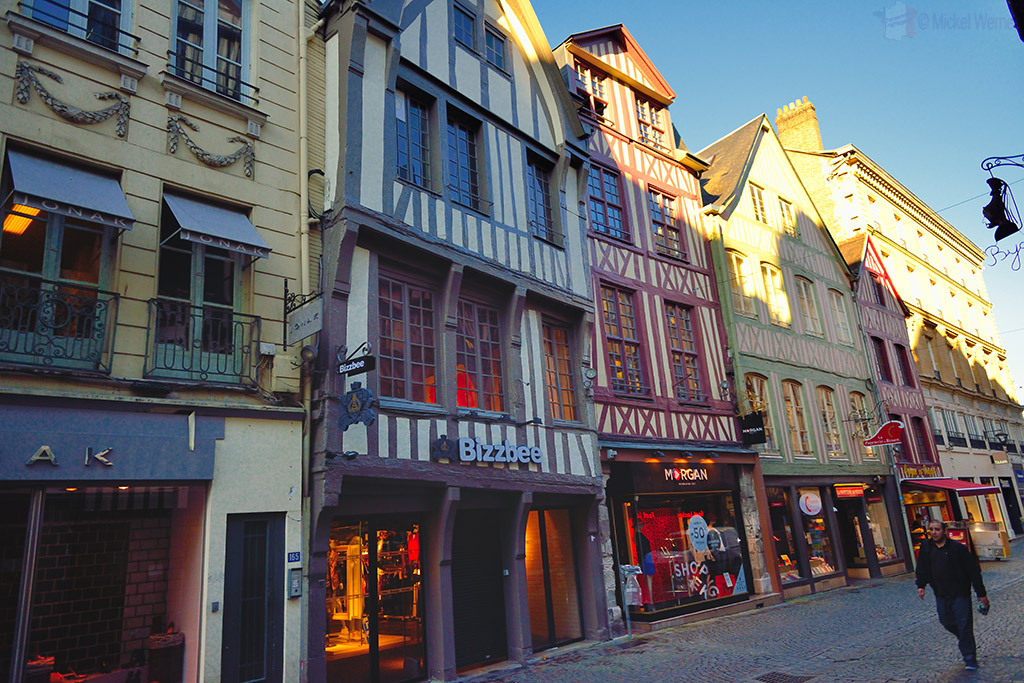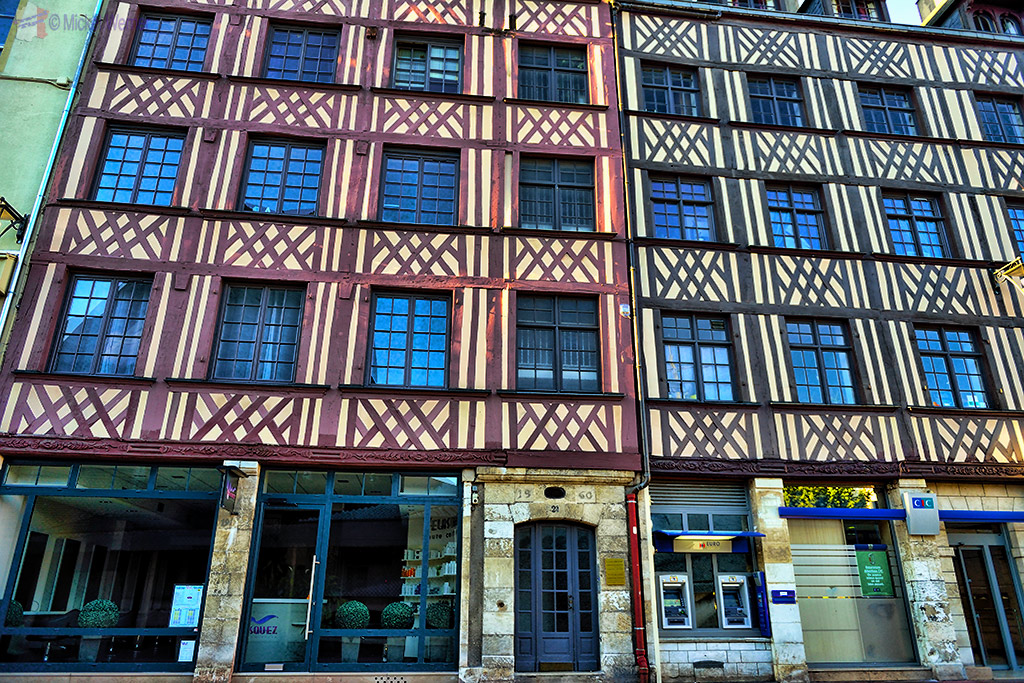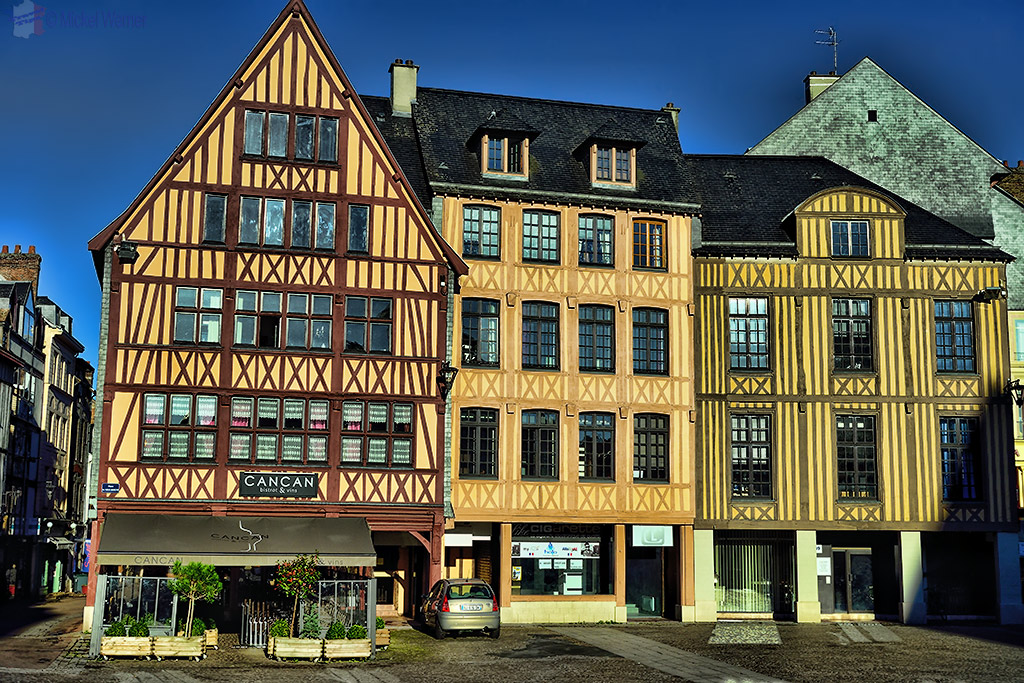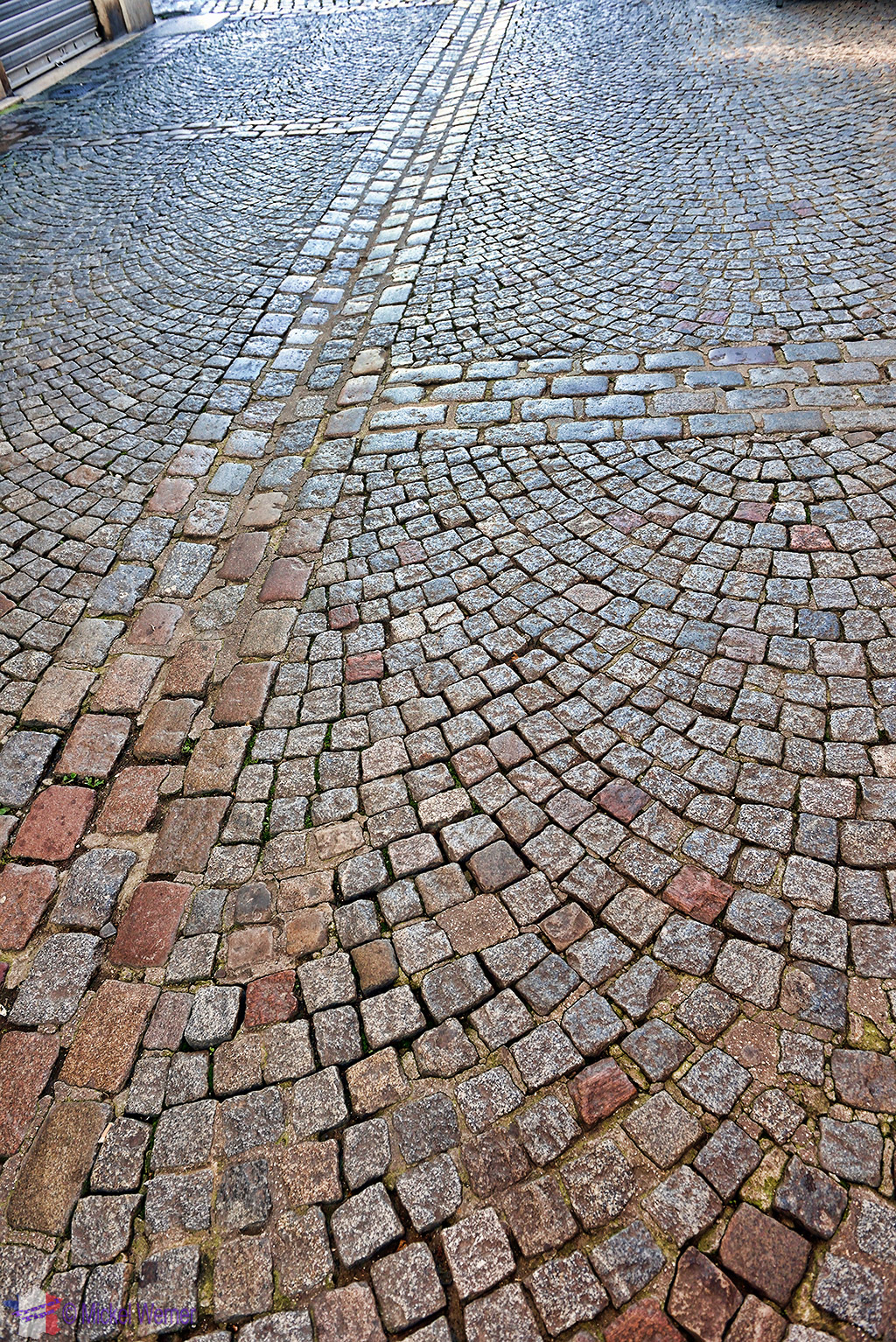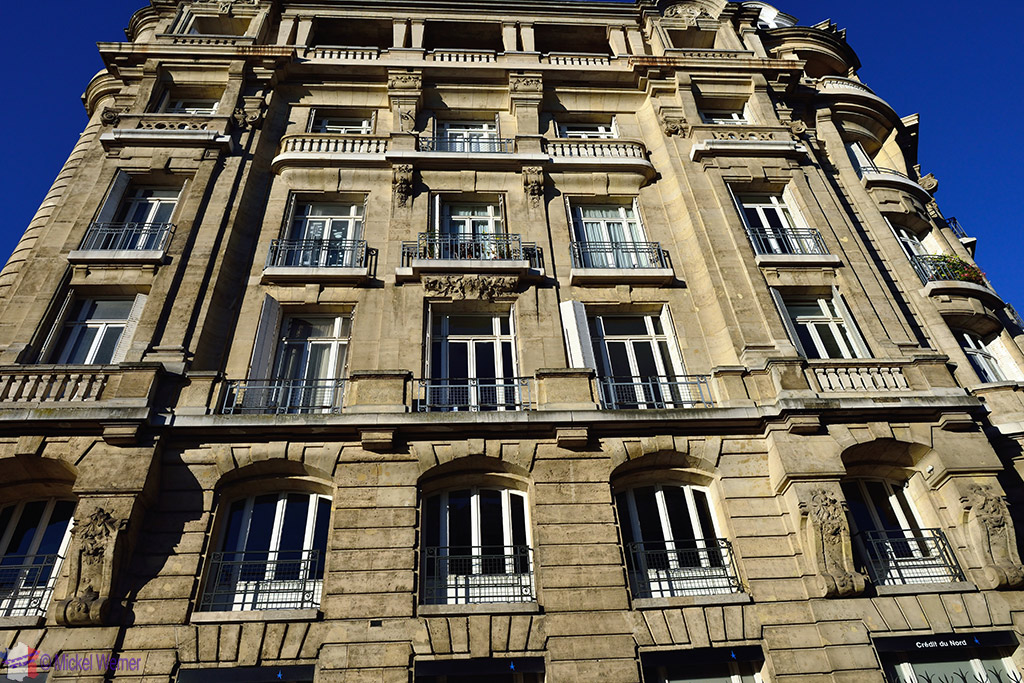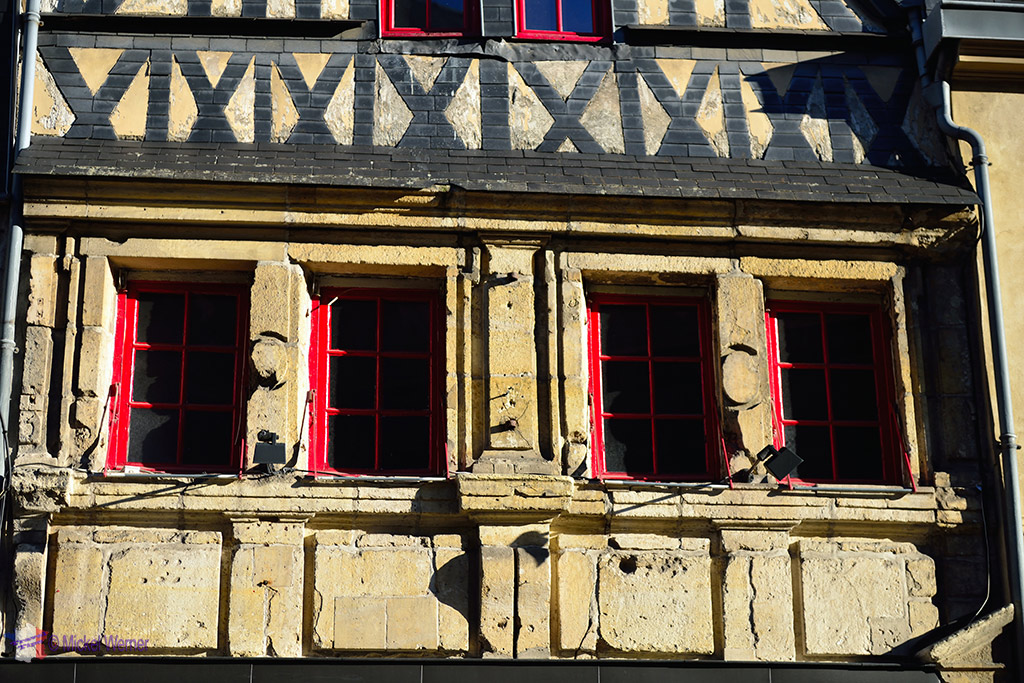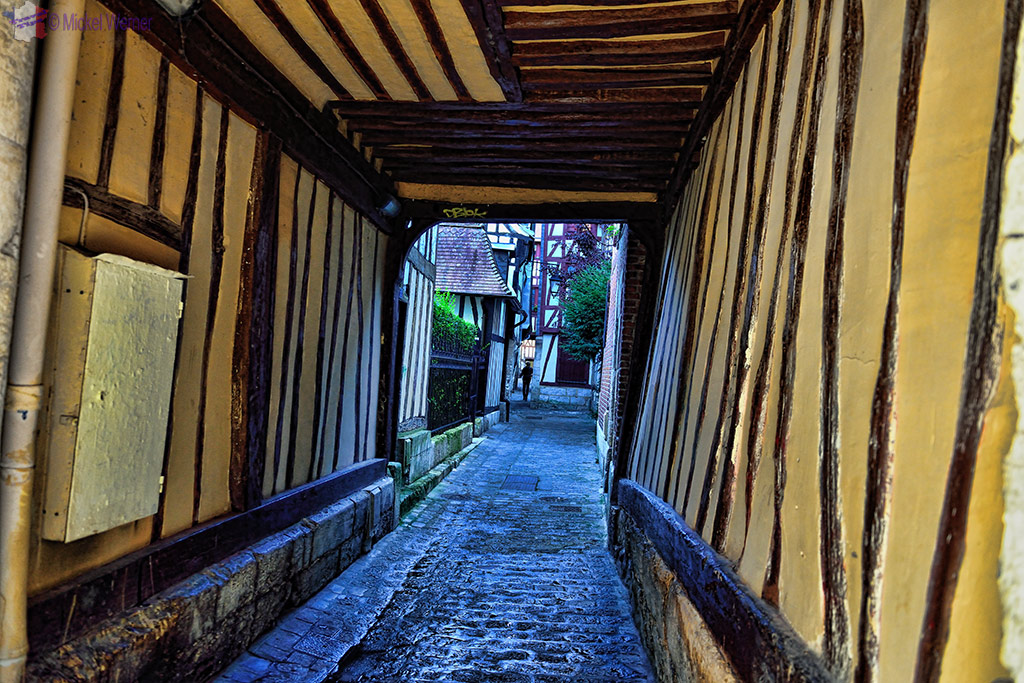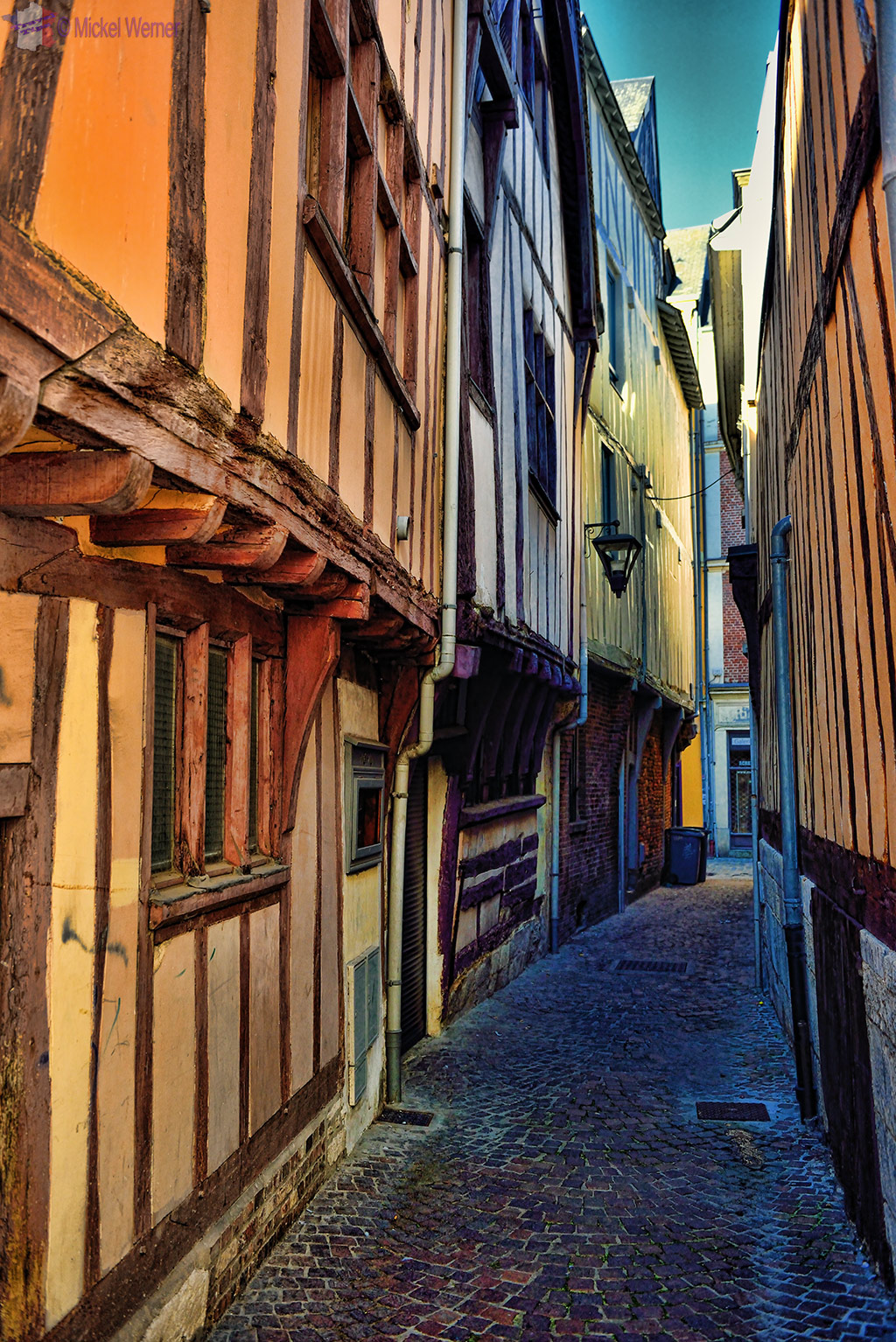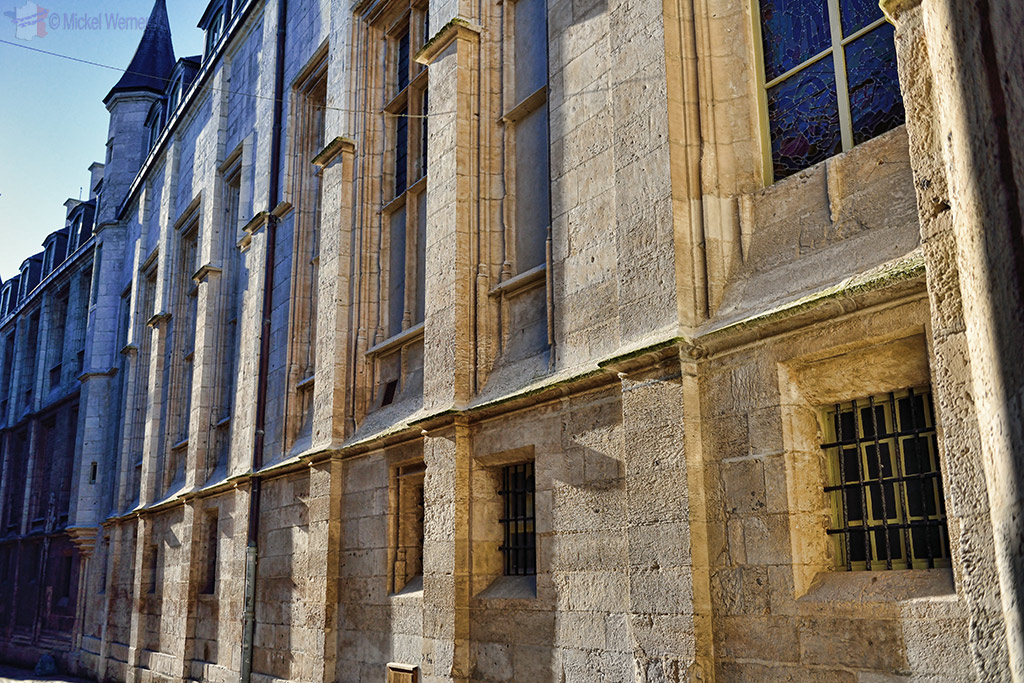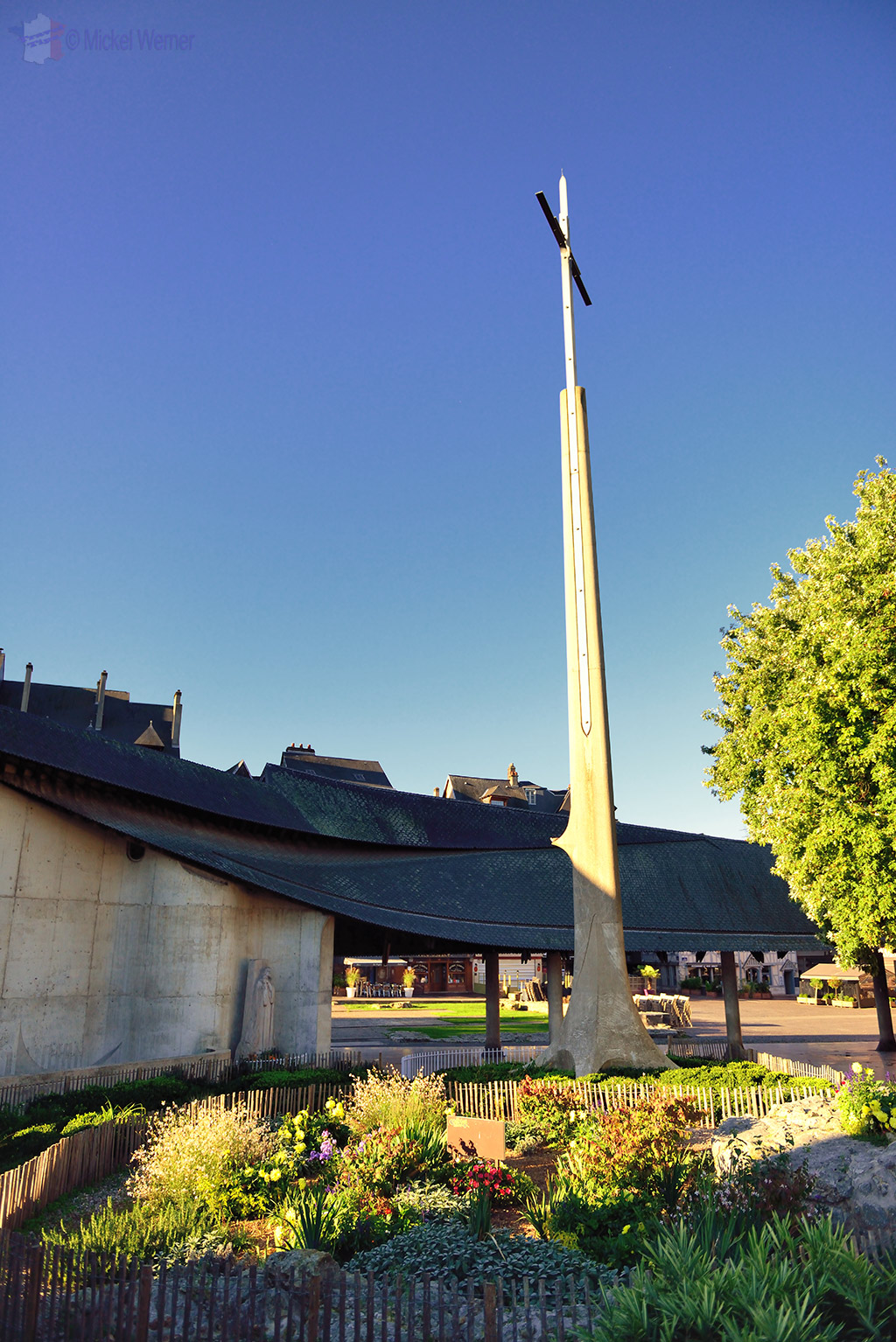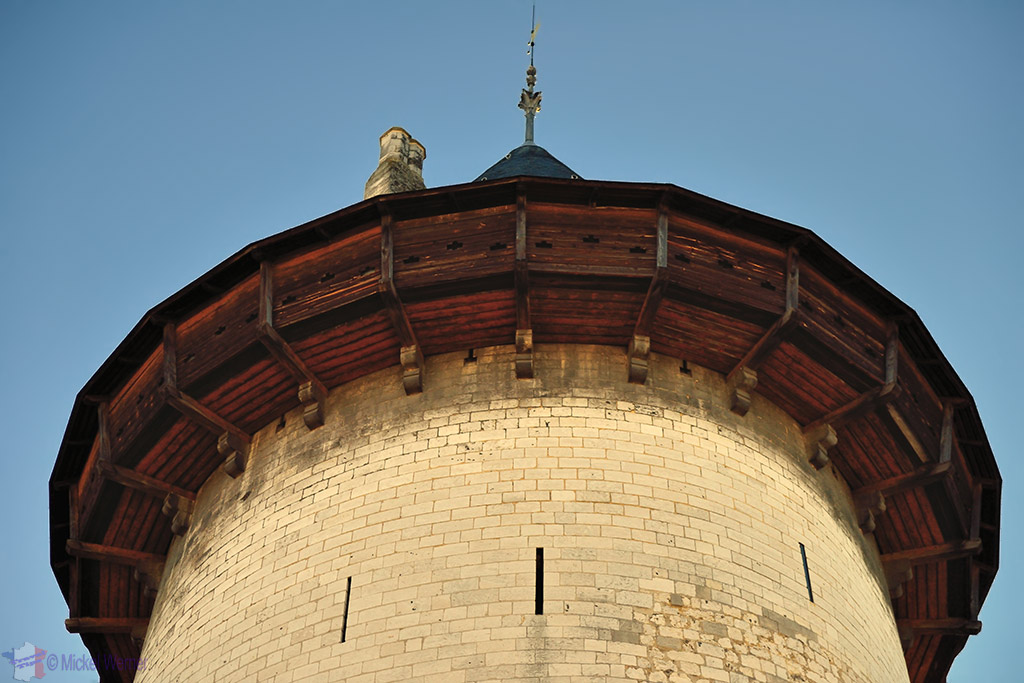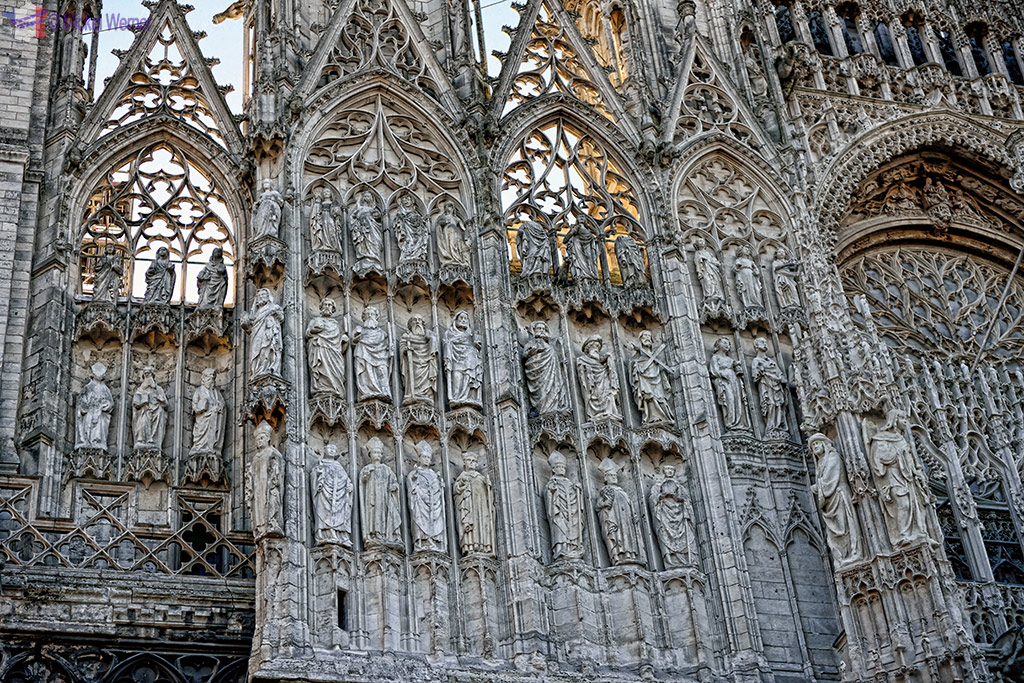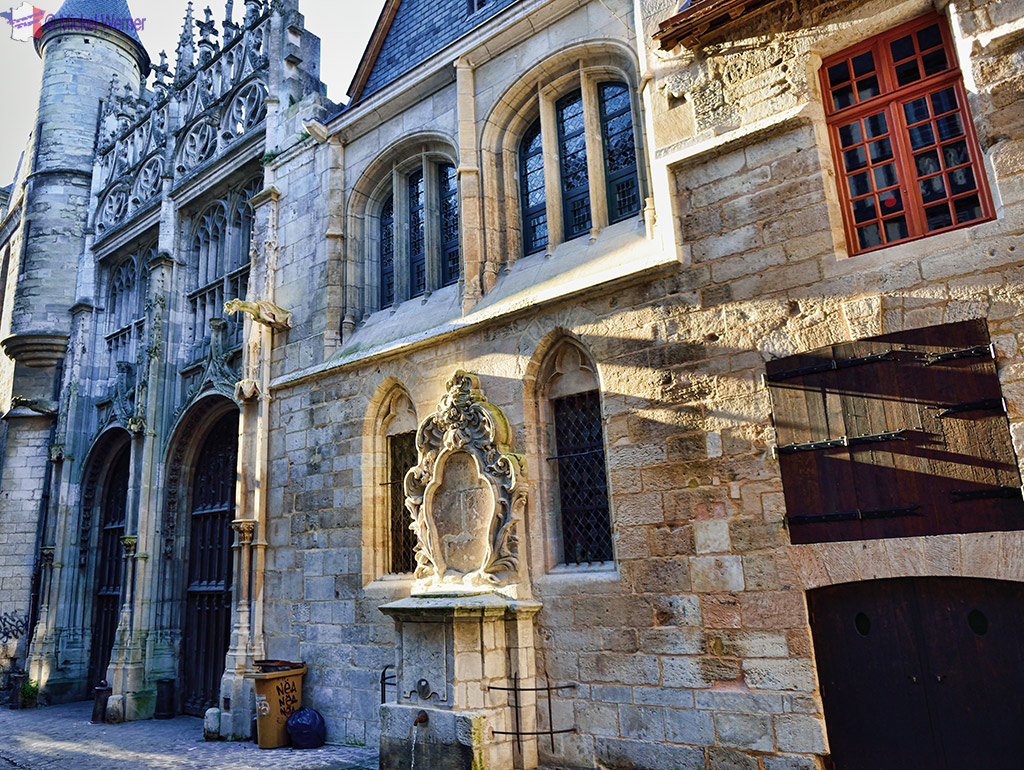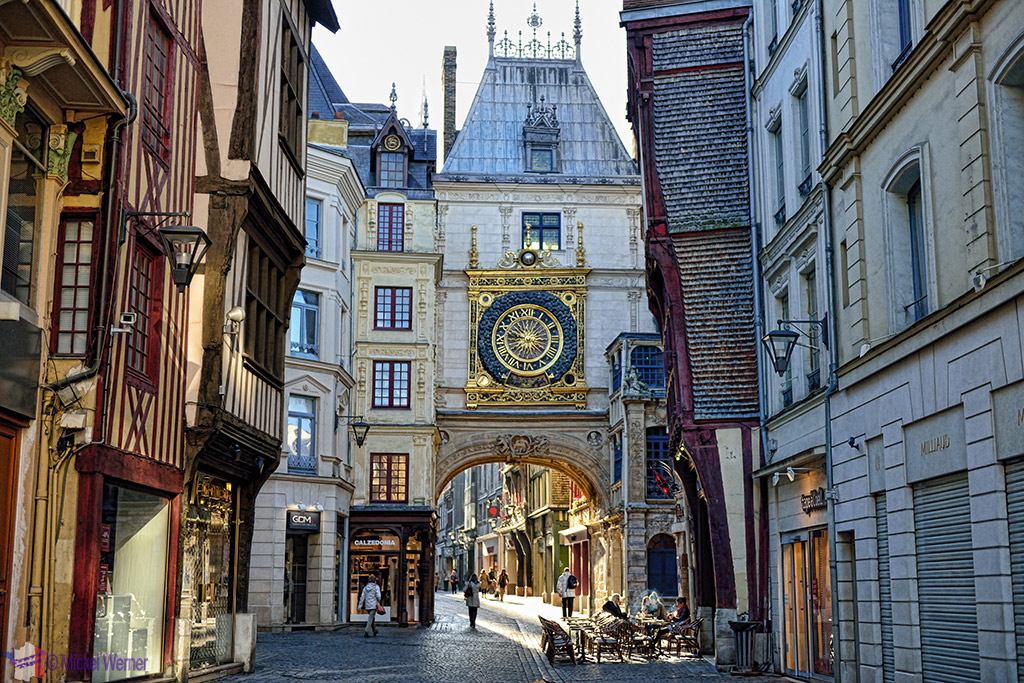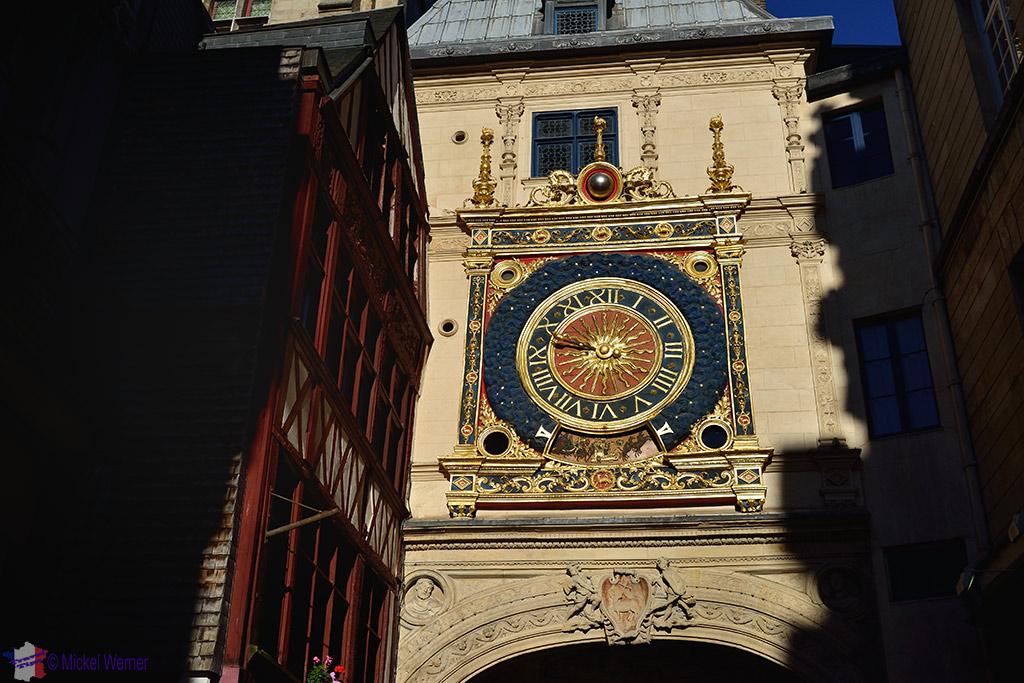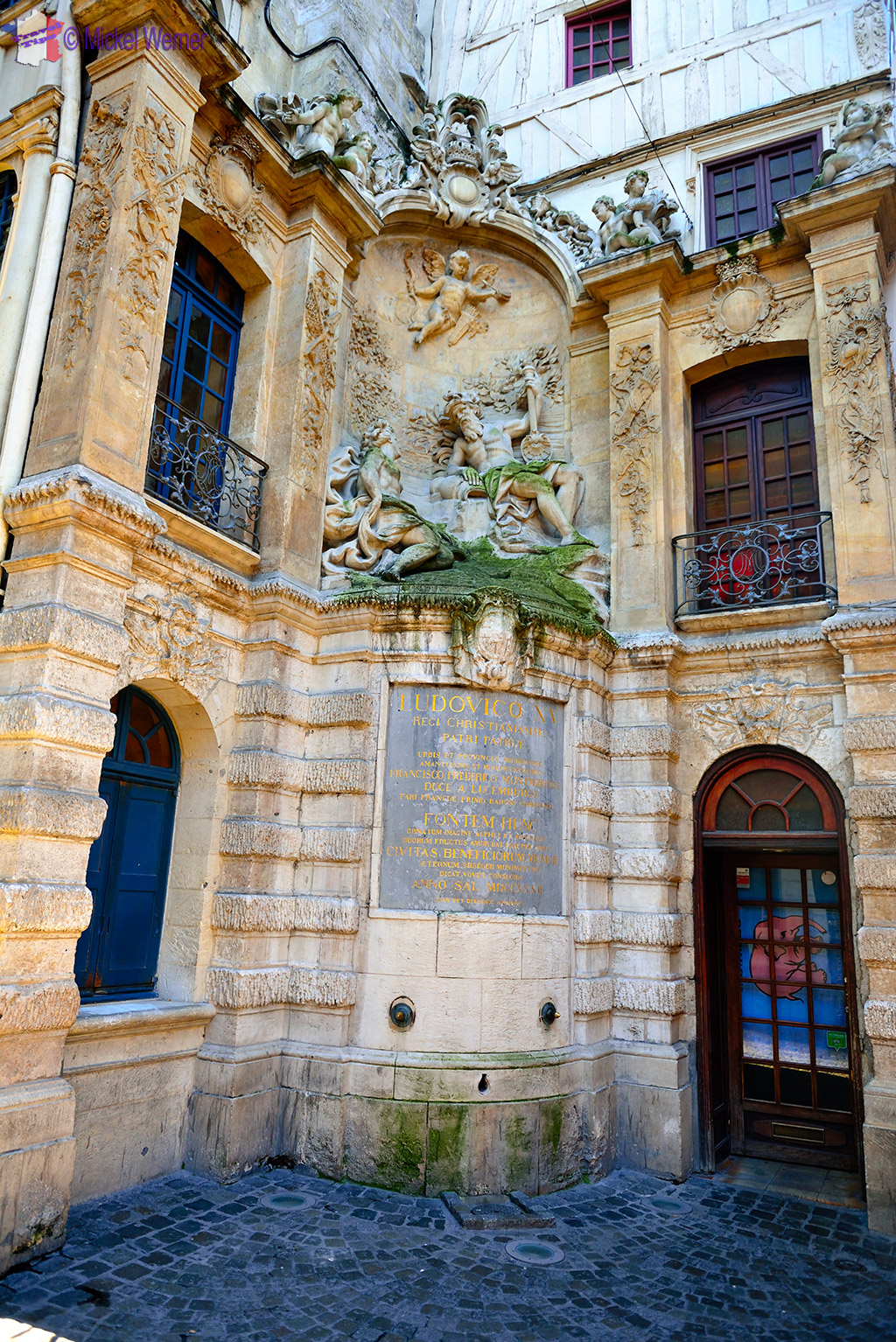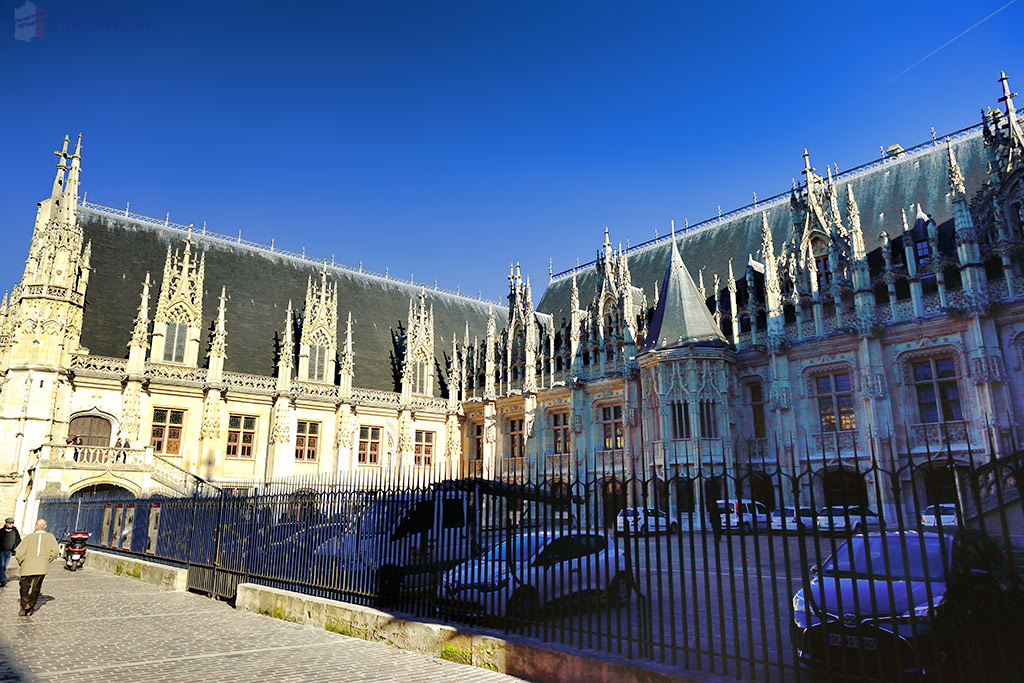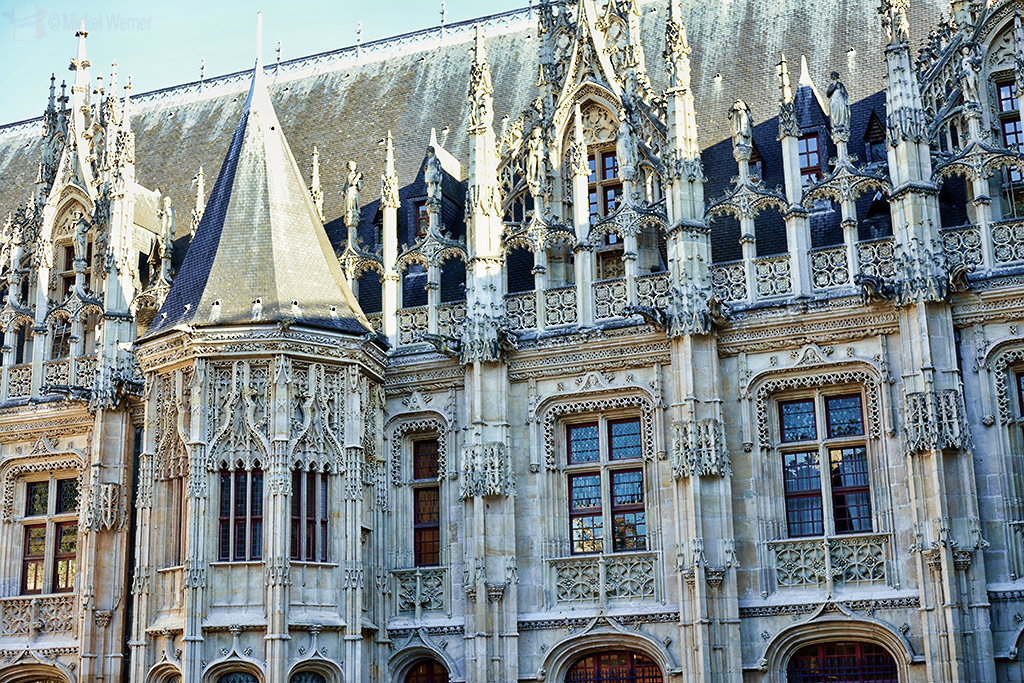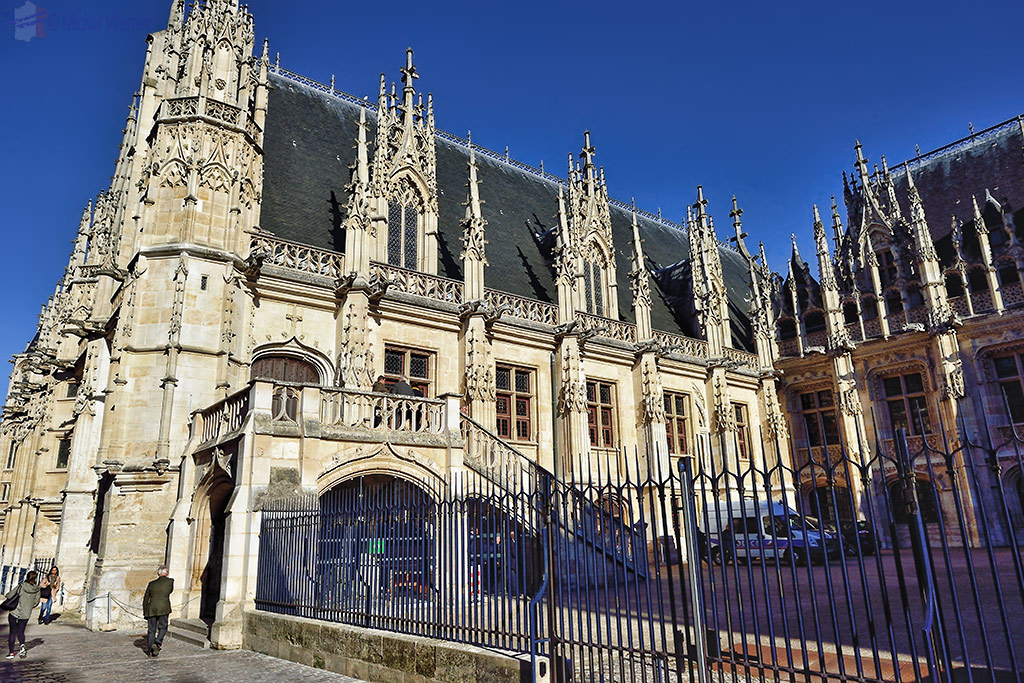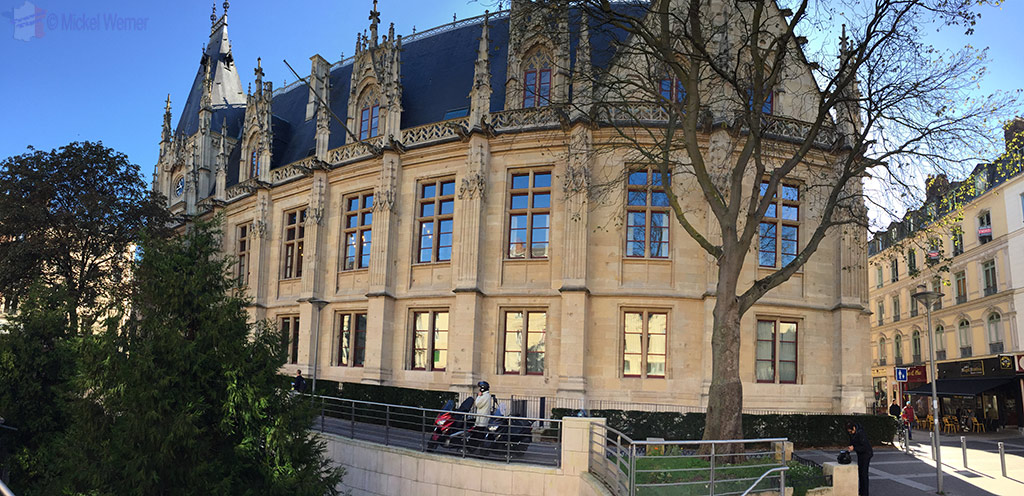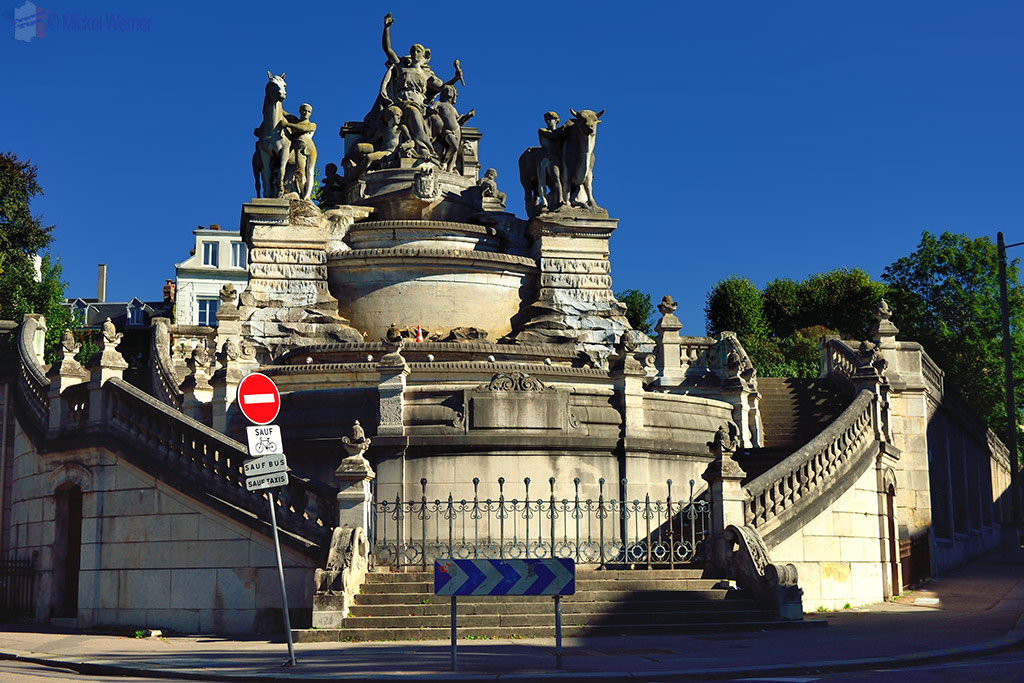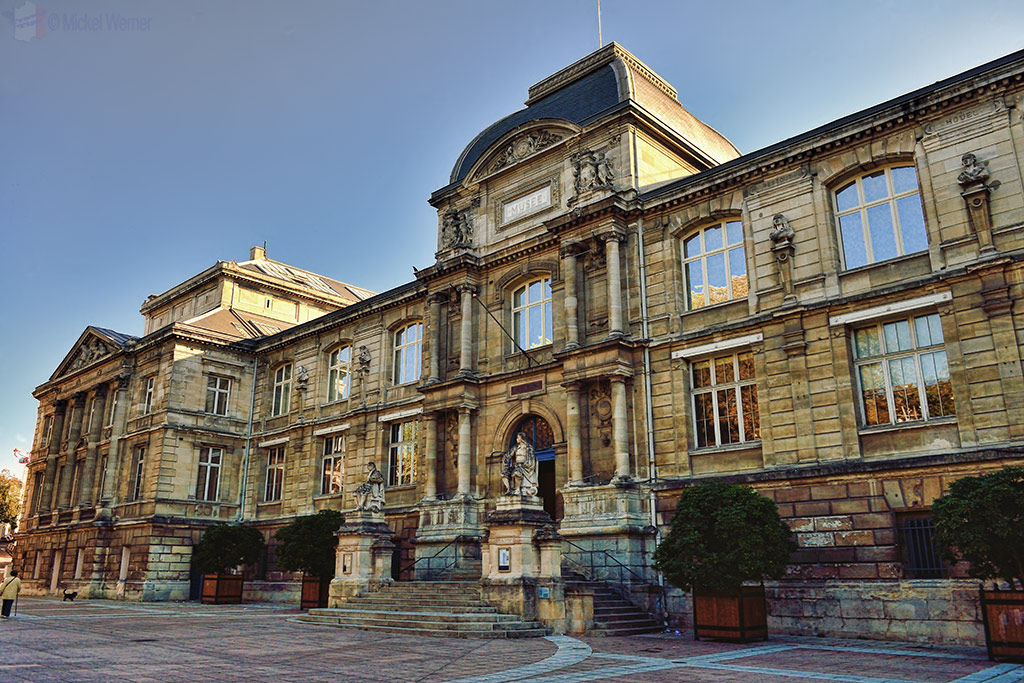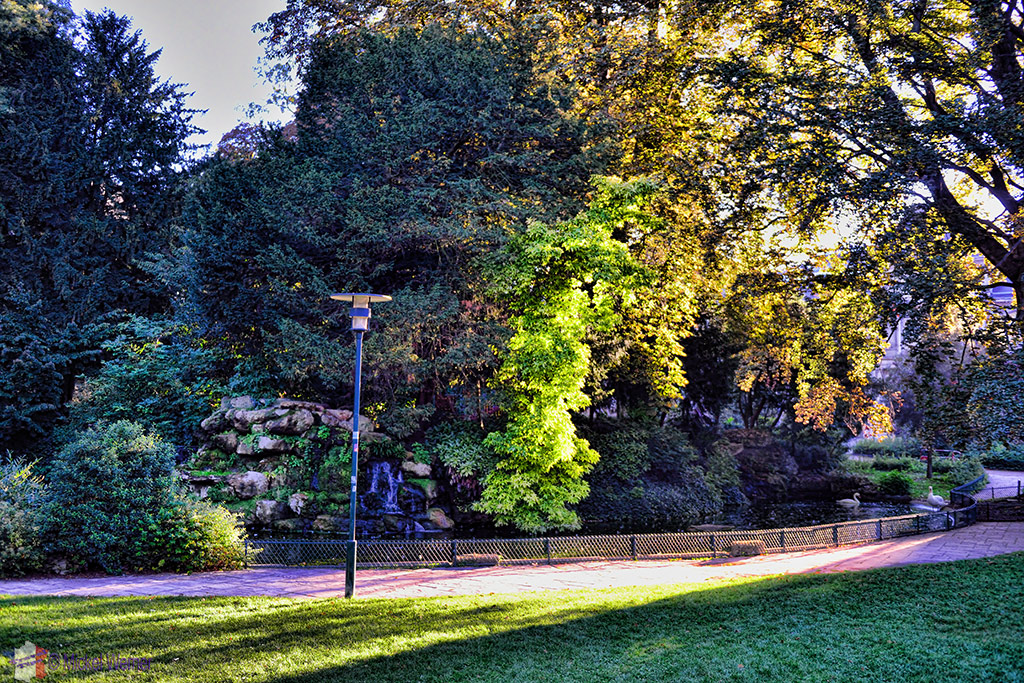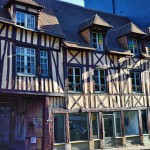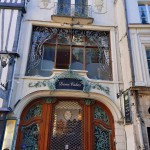Rouen has a lot going for it, and a few things that are not so nice. But after a visit to Rouen, you will leave with two impressions in your mind: the sheer number of churches & cathedrals and Joan of Arc (in French “Jeanne d’Arc”). Because this is the city where Joan of Arc was burned at the stake.
This city/town forms part of one of the French legs of the Santiago de Compostela pilgrimage route.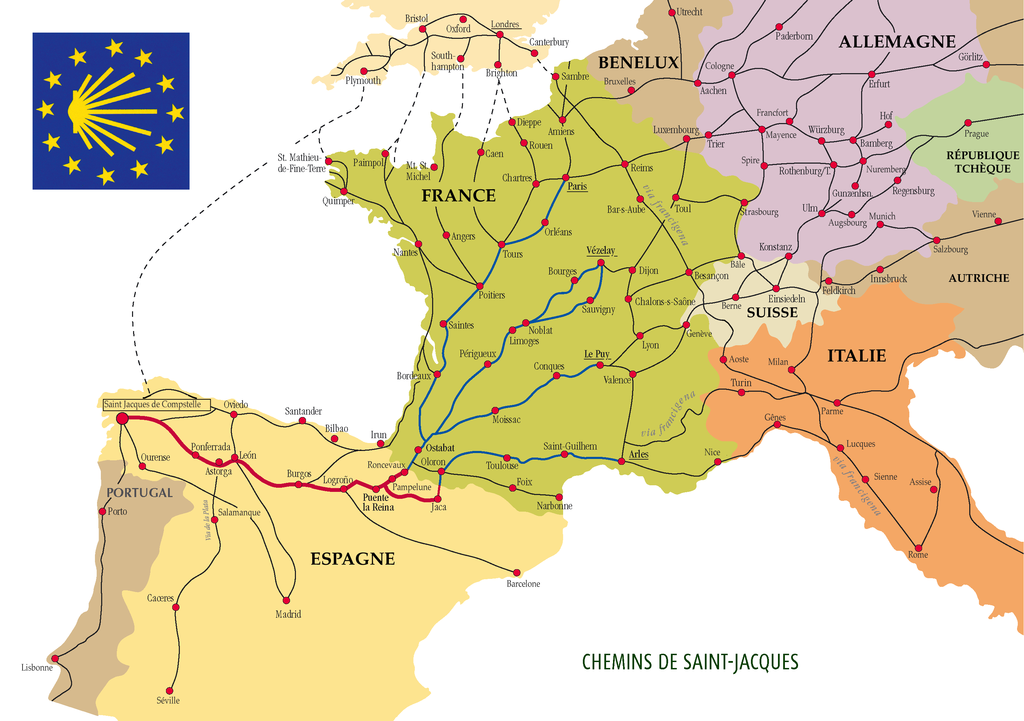
Santiago de Compostela pilgrimage routes
Rouen is a reasonably big city (by French standards, some 110,000 inhabitants in the city, 500,000 in the suburbs), and it was hit extensively (45%) during the bombings in WWII, but the inner city is pretty much “as it was” centuries ago. Although some of the older buildings, like the cathedral, were hit during the Allied bombings, it has been magnificently restored. This is what makes Rouen very special; it’s old. The city became a real centre during the Vikings (like most of Normandy) in the year 841 AD (though the area was already mentioned in the 3rd century AD, inhabited by the Celts). From then, the city switched owners between the English, French, Italians and Germans many times over. It was in the 10th and 11th century that Rouen really became in its own right, growing faster and richer thanks to the Seine river and becoming the second most import city in France.
Rouen is also the capital of Normandy, so this is where the “governor” (in French “Prefet”) resides. The most interesting part of Rouen is the Right Bank, the Left Bank was greatly destroyed during WWII and therefore not so interesting for sightseeing.
When walking in the inner city (walking is the best way, though there is a good public transportation system, the inner city is mostly pedestrian) you will be impressed by two things; the very old, medieval houses (some date back to the 13th century) and the sheer number of religious buildings (some 35 currently used churches, abbeys, monasteries, chapels or ruins thereof).
These older houses and buildings are made out mostly wood and brick. The houses are well maintained, the wood is treated regularly and therefore still the original wood used centuries ago.
Many of the houses now have a shop beneath. But do not be fooled! Many of these “old” houses are often brand new, they have been built to resemble the older houses. The wooden frames are still there, but the “torchi” (a mixture of straw and mud) placed in between has been replaced with cement.
No matter where you go, no matter which street you take in the inner city, you will stumble up on old traditional Normandy-style houses:
Rouen was one of the most rich and influential cities in Europe during the Middle Ages, and it shows today. In the inner city the streets are still made out of cobblestones, just like the old days.
But not all houses & buildings are as old as in the previous photos, some are more “modern“, typically from the early part of last century (for Europe, that’s modern).
But the majority of houses and buildings are either old, or made to look old:
NOTE: To see more photos of old houses and their styles, click here.
Alleyways
Walking through the old city, you will see many small alleyways scattered around the inner core:
Sometimes the alleys are so small and narrow you have to bend over and walk sideways (they remind you a bit of the Traboules in Lyon):
But these are official alleys and allow you to cross to other bigger streets. In fact, they are interesting and useful shortcuts to walk through the city. You will find them anywhere in the inner city:
Joan of Arc
As mentioned in the beginning, Rouen played a very important part in Joan of Arc’s (in French Jeanne d’Arc) life. We’ll not go into the history of this historical and valiant women, but it is in this city that the clergy were forced by the English to condemn her and burn her at the stake.
These walls above are part of the archbishop’s palace (built against the imposing cathedral) where Joan of Arc was tried and condemned to be burned at the stake. Today, part of the palace is a museum dedicated to Joan of Arc.
Above is where Joan of Arc, aged 19 years, met her end. The wooden sign in the middle of the photo is where she was burned. Today it’s still a market, and on the left you see a modern church, built in 1979, named after her (Eglise Sainte-Jeanne-d’Arc).
During her imprisonment, Joan was held captive in the dungeon tower:
The “Joan of Arc Tower” as it is called today, is the last surviving structure of the fortress that used to stand here. The restored details of the tower as amazing, just as you would imagine it centuries ago:
Obviously, anywhere you go in Rouen, you will see the name “Jeanne d’Arc”. Shops, hotels, restaurants, museums; the name sells well.
Notre Dame Cathedral
One of the main sights is the imposing cathedral of Rouen, named the Notre Dame Cathedral:
The place it is built on used to be a church, which then became a cathedral. But the buildings were burned to the ground by the Vikings during the 9th century. The construction of the current cathedral started in the year 1202.
The work is intricate, but different from each angle you look at the building. That is because the work may have started in 1202, but after fires, hurricanes, lighting strikes and bombings, parts of the cathedral had to be rebuilt. Officially the building was finished in the year 1880. So different styles, materials and decorations make the building very interesting, if not striking. At one stage, the tower was considering world’s tallest construction (from 1976 to 1880).
Many famous people are buried in the cathedral; Richard the Lionheart (King of England) and also Rollo, the Viking and founder of Rouen.
Alongside the cathedral are some nicely kept gardens and reflection areas. Next to these is a street leading you to the Archbishops palace which is joined to the cathedral;
It’s behind those doors that Joan of Arc was condemned to burn at the stake.
NOTE: To see more of the churches and other religious buildings in Rouen, click here.
The Big Clock
Another famous sight in Rouen is the big clock (in French “Gross Horloge”).
The clock is one of the oldest still-working mechanisms in France. The actual clock inner mechanism was made in 1389.
In 1529 the clock was moved into the tower it is currently residing in and a face was added to the clock. The street it is on was named “Rue du Gros Horloge“.
On the other side of the clock tower, it looks like this:
The clock is like a upmarket Swiss timepiece; it shows the moon phases, even the day of the week and of course the time.
Today, the tower is a museum, and you can visit and see the clock’s mechanism. Click here for more information about the museum.
The Courts
The courts of Rouen, in French the “Palais de Justice” (=Justice Palace) is an imposing Neo-gothic style building:
Construction started in the 15th century, but the building was not a court then but the parliament for Normandy.
Inside the building they discovered under the rightmost stairs, a wall and inscriptions in Hebrew (there was a very big and active Jewish population living in Rouen in the early Middle Ages). The wall and inscriptions date back to the 12th century. The inscription in Hebrew reads “That this house may be sublime“.
Here is a photo of the side of the Palace, but mind you, the photo is a panoramic one, so it’s distorted:
Mairie – City Hall
The City Hall (in French “Mairie”) is in fact the sleeping quarters of the Saint-Ouen Abbey. The abbey was no longer used, and after having lived in several buildings over the centuries, in 1800, the City Hall was moved permanently into the sleeping quarters of the monks.
You can still see the imposing Saint-Ouen abbey built against the current City Hall.
Other Monuments and Special Buildings
One very interesting building that in recent years opened is the Bourgtheroulde Hotel.
This used to be a private house and built in the 16th century in gothic style. It had become a bank, but in 2006 it became a luxury hotel and spa managed by the Marriott group.
If you ever get the chance to go there, head for the bar inside. You’ll be standing on a glass floor, and underneath you is the swimming pool. Click here to go to the Hotel’s web site.
This is the Sainte-Marie fountain, built at the end of the 19 century over a water well. Today, water from the underground spring and well is still used for drinking water in Rouen.
Another interesting visit is the railway station with its big clock tower. The station lies on the Paris-Le Havre railway line and it was built in 1847. Like most of the railway stations in Upper Normandy, it was designed and built by the British, in this case William Tite. Inside the station is an old fashion brasserie where you can eat lunch or have a beer while waiting for the delayed train.
The Fine Arts museum of Rouen is one of the biggest in France covering arts from the Middle Ages until today. The museum was inaugurated in 1809. It’s extensive collection covers the range of famous artists, including (but not limited to) Monet, Pissarro, Renoir and Degas. Click here to access the Museum’s web site.
In front of the museum is a well appointed park with water, even swans:
Summary
Rouen is definitely a place to visit and spend a day or two. It’s big enough with enough things to see to spend at least 2 full days. But as I said in the opening sentence, there are three downsides to Rouen:
- Pollution. Rouen is located in a valley, and there is little or no wind to chase away the car fumes. You can see this with all the buildings and monuments: they are all black.
- Because Rouen’s inner city is small and narrow, expect a lot of traffic jams.
- For some reason, there are a lot of hobos, drunks and beggars/buskers around town.
But it shouldn’t prevent you from seeing the majestic and medieval city. Walk the cobblestone streets, duck into an alley and see where it brings you, take in the old buildings and enjoy the good food.
Other articles about Rouen on this Site
- Click here to see the long list of things to do, see or where to eat.
- Click here to see a couple more of the churches and religious buildings in Rouen
- Click here to see a couple more of the old houses found in Rouen
- Click here to see the Festival of the Stomach of Rouen
- Click here to see the Rouen Armada of Tall Sail Ships
- Click here to read the review of the La Couronne restaurant, France’s oldest Inn
- Click here to read the review of the Dame Cakes restaurant, an institution
- Click here to read the review of a 2-Star Michelin restaurant, Gill
Related Posts
- 10000
- 10000
- 10000
 Once a year, mid October, Rouen closes its city centre during a weekend and holds the "Fete du Ventre et de la Gastronomie Normande" festival. The best translation would be "Festival of the Stomach and Normandy Gastronomy", meaning food, but it's more than that. It's also the "stomach" of Rouen, or…
Once a year, mid October, Rouen closes its city centre during a weekend and holds the "Fete du Ventre et de la Gastronomie Normande" festival. The best translation would be "Festival of the Stomach and Normandy Gastronomy", meaning food, but it's more than that. It's also the "stomach" of Rouen, or… - 10000
- 10000

